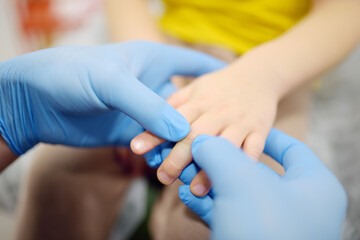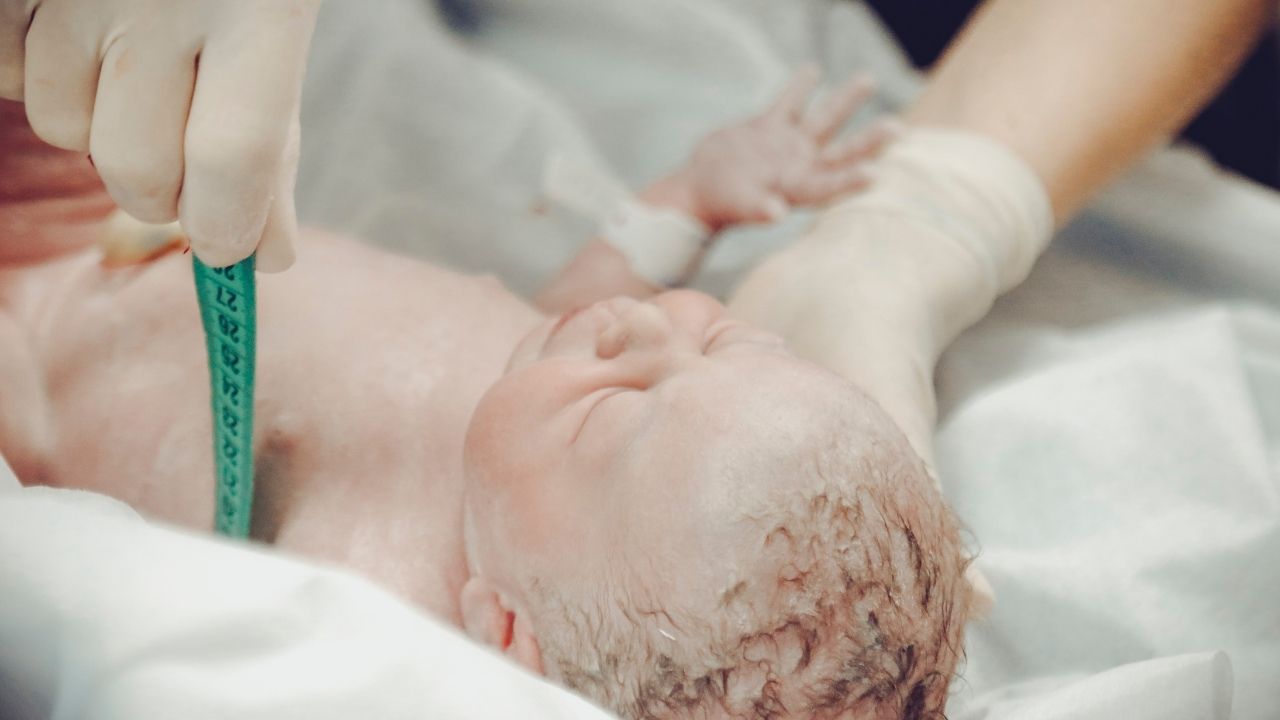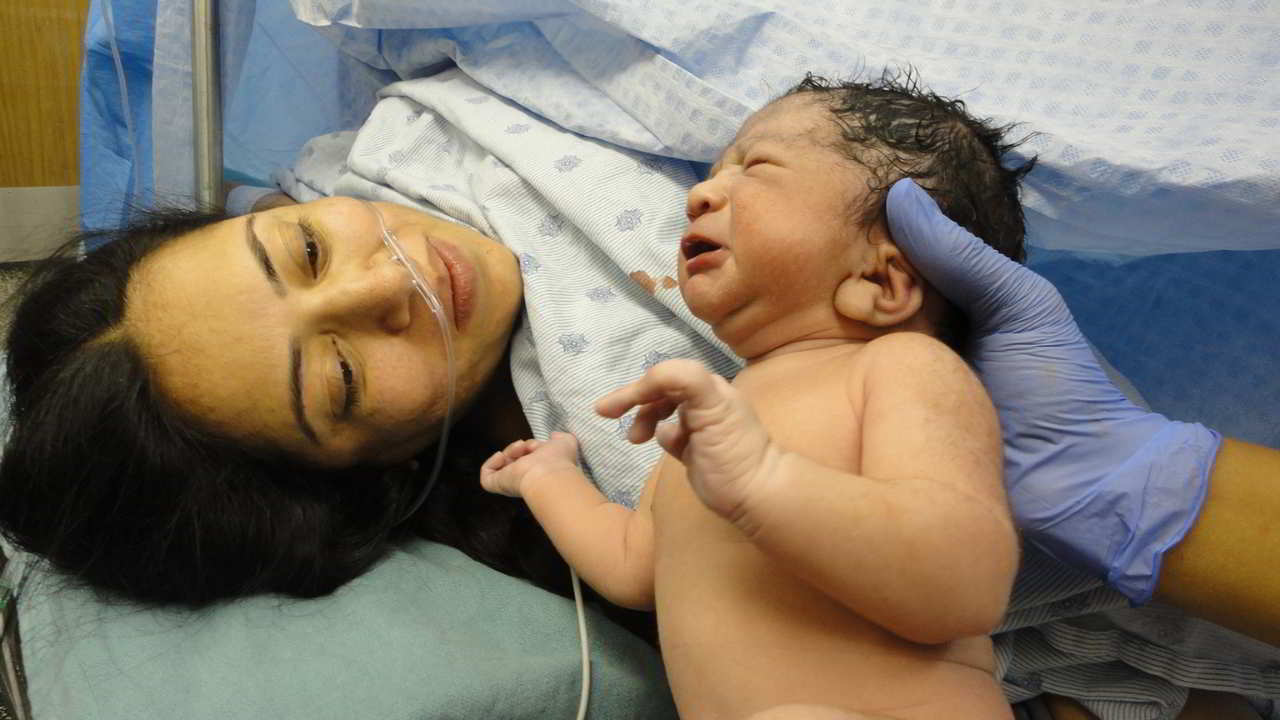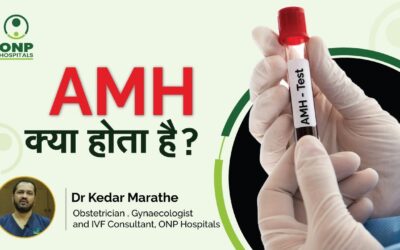As a pediatrician at ONP Hospitals, I’ve witnessed countless stories of resilience and recovery, but one case stands out—little Anaya’s story. Anaya, a spirited four-year-old, came to us after a severe finger injury that happened while she was playing in the backyard....


Overview
Normal delivery, also known as vaginal delivery, is the most common type of delivery worldwide. According to Wikipedia, a vaginal delivery is the birth of a baby through the vagina.
Everything You Need To Know About Normal Delivery
Stages
Normal delivery, often known as vaginal birth, has many phases, including:
First Stage: Labour and effacement of the cervix
Contractions help dilate, soften, and stretch the cervix so that the baby may be born during the initial stage of normal birth. A woman’s first birth may take up to 13 hours, whereas successive deliveries take roughly 7-8 hours longer.
The first stage is divided into three parts:
Early labor:
- The woman becomes aware of the 3 to 5-minute intervals between contractions.
- The cervix may expand by up to four centimeters during this period.
- Early labor might be spent at home by the mother. To be on the safe side, notify the doctor.
Active labor:
- When the contractions grow more intense and frequent, the woman enters the active phase of labor.
- They happen every 3-4 minutes or so, and each one lasts about a minute or so.
- The cervix expands by 7 centimeters during labor. For the sake of the mother’s health, the birth must take place in a medical facility.
- During this stage of labor, the water breaks. After then, contractions intensify.
Transition Phase:
- This is the most painful part of the pregnancy since the cervix has expanded to its maximum size of roughly 10 centimeters. Contractions that are painful and last 60-90 seconds continue to occur every 2-3 minutes.
Second Stage: Pushing and giving birth to a child
- After the cervix has fully dilated, women enter this stage. The baby is being pushed out of the delivery canal headfirst because of the continued intensity of the contractions. Every time a contraction occurs, the woman is instructed to push more and harder, which might leave her exhausted. As the baby comes out, she may also feel a lot of discomfort in the area surrounding the vaginal entrance. There may be a decision to perform an episiotomy (women’s hysterectomy) to increase the size of the vaginal opening to help the baby come out. The woman will have to keep pushing until the baby is out.
Third Stage: Placenta Is Pushed Out
- Afterbirth is the last step of normal delivery, during which the whole placenta is pushed through the uterine canal and delivered to the mother. After the baby is born, the placenta might be delivered anywhere from a few minutes to an hour later. Massage the lower abdomen to help the process forward.
Benefits
The following are some of the reasons why giving birth naturally is preferable to any other method:
- Better for both mother and child’s health: The initial connections a youngster makes with the outside world occur during the first few minutes spent with his or her mother. It’s comforting for the newborn to have his or her mother’s voice and arms to lean on after the trauma of the world outside the womb. When a kid is born naturally, it is placed in the mother’s arms practically immediately. As a result, bonding occurs immediately.
- Stimulates the production of milk: During labor and delivery, the body’s natural hormone systems are stimulated by the natural process of childbirth. The mothering hormone, prolactin, as well as oxytocin, endorphins, adrenaline, and noradrenaline, are all released at this period.
- Ingestion of Protective Bacteria from Birth Canal: During pregnancy, the flora of the vaginal cavity changes. Birth canal bacteria help children develop a stronger immune system and better digest milk and solid meals. This helps children grow up to be healthier adults. A person’s microbiota is created during childbirth, and the vaginal microbiome plays an important part in that development.
- Improved Postnatal Recovery: The natural method, as opposed to a medicinal one, helps the woman to recuperate swiftly following childbirth. The body has a regenerative process that needs its time to complete to get the body back on track. In medical procedures, the risk of infection is increased because of the longer time it takes to fix something that was not natural in the first place.
When to Visit the Hospital?
You should go to the hospital if your contractions are 5 minutes apart, lasting 1 minute, and continuing for 1 hour or more. Contractions that are weak and brief may indicate that you’re in the early stages of labor. Long-term, being at home, resting, and allowing your body to evolve, may help you give birth vaginally.
Conclusion
Normal delivery is safe for young, healthy women. Normal delivery is indicated by an active lifestyle, normal blood pressure, and a well-positioned fetus. This is when you should choose a standard delivery method.
Sub Services
What Patient has to say about us
People heavily rely on reviews from other patients when choosing a healthcare provider
Our Patients Many many happy returns of the day......... The best doctor in the world My mother was suffering from severe pain in both knees and spine. Dr. Aashish arbat sir has operated today after 15days she is doing every thing thank you Dr aashish arbat sir and team Especially the major support was from Dr Ram sir from admission to dischatge and follow ups and taken care very nicely thanku Dr. Ram sir Our Patients After enduring knee pain for the past decade, my mother sought advice from various doctors in Nagpur, Nashik, and Pune. They all recommended knee replacement surgery, but it was only when we discovered Dr. Aashish Arbat and the option of robotics surgery that we made the decision to proceed. The surgery took place on June 23, 2023, and it turned out to be an incredible experience. To our astonishment, on the morning of June 24, my mother was able to stand on her own legs and even take a few steps. This remarkable progress was made possible due to the advanced assistance of robotics arm and Artificial Intelligence. Dr. Aashish Arbat is an exceptional and highly experienced surgeon, and we are immensely grateful for his expertise. We also extend our appreciation to his colleagues, Dr. Sharma and Dr. Ram, for their excellent skills and compassionate nature. Our heartfelt thanks go out to the entire team for enabling my mother to live a pain-free life Our Patients My mother got her both robotic knee replacement from sir on Oct 2021. The team and sir have made the complete process seamless. Especially my mother was very comfortable post her surgery. Thank you Dr Arbat and team. Our Patients Our Patients Our Patients Hello. My wife has severe arthritis in her body knees since 2017. We communicated many doctors but she was not happy. We visited Dr arbat for same issue and he came up with robotic knee replacement solution which suited her accurately and she is walking 5-6km daily without hesitation and living comfortably. Thanks Dr. Aashish Arbat and his new technology.![]()
Chhaya Kate
![]()
pravin kharat
![]()
T Srivalli
![]()
Mohan Satavekar
![]()
VIVEK PANDEY
![]()
Subhash Bobade
Blogs
Addressing Childhood Obesity: Preventative Measures and Healthy Lifestyle Choices
Childhood obesity is growing concern. More kids are affected every year. Tackling this issue early is crucial. This ensures children grow up healthy and happy. Fortunately, there...
Healthy Sleep Habits for Children: Tips for Parents
Good sleep is essential for children’s health and development. Yet getting kids to sleep can sometimes feel like an uphill battle. Establishing healthy sleep habits early on sets...
The Role of Diet and Nutrition in Managing Encopresis in Children: Insights from Dr. Amita Phadnis
Encopresis, a condition characterized by involuntary soiling in children, can be distressing for both the child and their family. First and foremost, complete treatment of...
Videos
Dr. Amita Phadnis’s Full Speech on Survival & Health Rights at UNICEF India.
Dr. Amita Phadnis ,M.D., Gave a Motivating Speech
Breast cancer is cancer that forms in breast cells. Women are mostly diagnosed with this cancer. Although it can be seen in both men and women
What is AMH
The granulosa cells in your ovarian follicles create the anti-Mullerian hormone, often known as AMH. According to the American College of Obstetricians and Gynecologists (ACOG), the generation of AMH is a reflection of your ovarian reserve.
FAQ’s
Pregnancy and Migraine Headaches: What Women Need to Know
When you are pregnant or breastfeeding, then you should be aware that migraine headaches are a normal part of the journey. Pregnant women might feel headaches owing to...
What Is the Problem of Orthopedics in Children?
While orthopaedic problems are commonly seen in and associated with the elderly, it’s important to be alert regarding the fact that they can afflict young people and children as well.
All You Need to Know About Reproduction
Most science students have to study about reproduction in their high school syllabus, and some learn from their parents, who may discuss it even earlier. It’s a very good thing to know about our own bodies…
Explore All Departments

ONP Prime

ONP Leela

IVF

Oncology

Pediatrics

Urology

Neonatology

Ophthalmology

Orthopedics

Gynaecology

Cardiology

IVF

Oncology

Pediatrics

Urology

Neonatology

Ophthalmology





 Home
Home Pregnancy
Pregnancy






